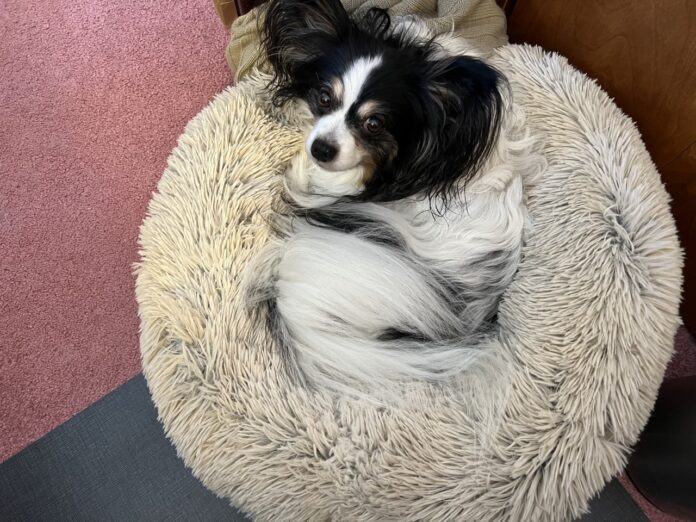Many manufacturers claim to have an anxiety-reducing dog bed that can make your dog feel less worried and safer. We found at least five dozen beds priced at less than $100 advertised as anti-anxiety beds seemingly by virtue of meeting one or two of these three criteria:
- It’s warm and cozy
An anti-anxiety bed’s purpose is to make a dog feel warm, comfortable, and safe–like he did as a puppy when he was sleeping with his mother and littermates, so it has faux fur (to resemble mom’s fur) and a raised edge to put his head in a similar position as his littermates did. - It’s deep and soft
Again, the theory is to replicate the snuggling that he once felt as a puppy. It’s usually a round bed, because a pile of puppies is usually round-ish, not square. - It fits and “belongs” to your dog
What’s a comfortable bed for your dog will vary, but he needs a bed he can call his own. It needs to be the right size for your dog’s preferences—some dogs want the old bed they’ve had since puppy days; other dogs want the smallest size bed they can squeeze into; and a few dogs prefer a large, flat bed they can stretch out on.If your dog has any orthopedic issues, consider a bed that claims it has orthopedic support and then “test” it yourself to determine if it’s cushioning and supportive. A comfortable bed helps reduce anxiety (we can all testify to that, right?).Be careful what bed you choose, though. Some pet-anxiety beds don’t unzip for cleaning; some have inferior memory foam liners that are hot or can emit noxious fumes; and most lack the faux hair cover. It’s easy to find a bed with all three qualities if you’re willing to spend hundreds or even thousands of dollars, though.
As for science, frankly, we didn’t find any peer-reviewed scientifically designed studies on how or if anti-anxiety beds make your dog feel better. We found studies paid for by manufacturers, studies about pets and humans sleeping on the same bed, and studies that took human orthopedic bed data and moved it to dog beds—all of which were referenced as support for anti-anxiety beds.
It’s OK, though, because an anxiety bed is a bit like putting a Band-Aid on a wound that needs stitches. You need to figure out what’s causing his anxiety and fix that. Is it his environment (an unhappy household), separation anxiety, other dogs or the lack of them, his exercise level, thunderstorms or other noises, or is it your behavior?
Some of these issues can be changed with the help of a force-free dog trainer, and some things (like thunderstorms) may not be changed at all. If it’s separation anxiety because your dog must sleep in a different room from you, the most expensive bed on earth won’t solve that.
After trying to reduce anxiety with training and environmental changes, it is wise to consult your veterinarian about anti-anxiety medications. It won’t hurt anything but your wallet to buy an anti-anxiety bed, but it may not make a difference either.






